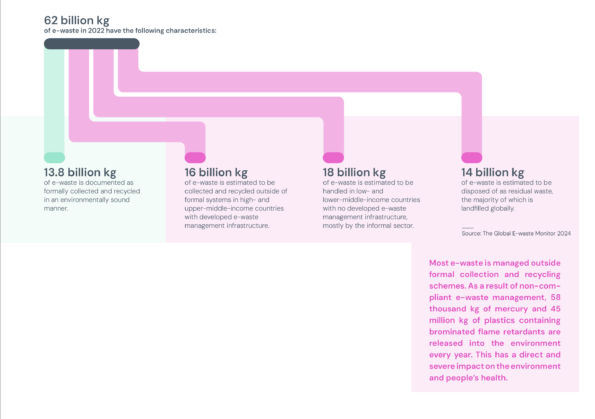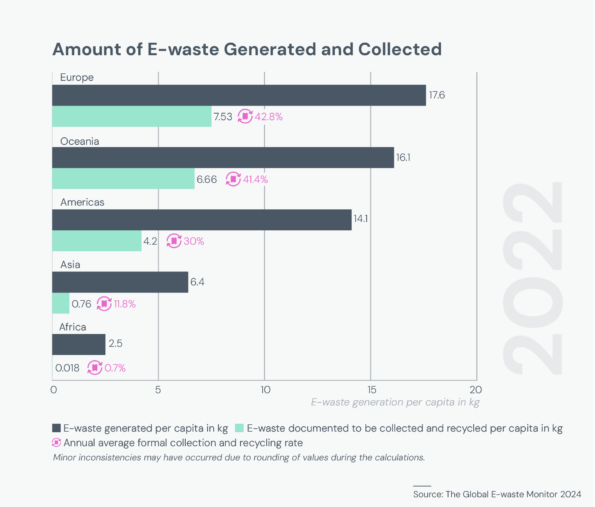May 3, 2024 — At first glance, one might consider it good news: The volume of electronic waste recycled is growing. At a closer look, the statistics are less savory: E-waste generation is accelerating five times faster.
In The Global E-Waste Monitor 2024, released in March, the United Nations Institute for Training and Research looked at current recycling rates for products ranging from phones and laptops to e-cigarettes and refrigerators. It found that e-waste generation rose from 34 million metric tons (37 million tons) in 2010 to 62 million metric tons (68 million tons) in 2022. Meanwhile, recycling only increased from 8 million metric tons (9 tons) to 13 million metric tons (14 tons) over the same period.
Current trends, such as the growth in solar photovoltaics and in the ubiquity of personal electronics, are expected to create an even greater need to deal with electronics that are perceived to have outlived their usefulness. Simply throwing them away is a problem because it adds to landfills, creates health risks, contaminates the environment, wastes valuable materials, and adds to the global greenhouse gas burden.
The low recycling rates fly in the face of the value of the materials being discarded. Electronic waste generated in 2022 alone contained some $US91 billion in metals. The problem is that extracting and recycling them currently costs even more. And fewer than half of the world’s countries have an e-waste policy, so there is little regulatory pressure to make more environmentally friendly choices.
The report notes that if recycling rates rise, eventually the value of the materials derived will exceed the cost of recycling. It projects that if 38% of electronics are recycled, the costs and value would even out. And if 60% of materials are salvaged, the economic benefit could be as high as US$38 billion per year.
So, how to boost recycling? Opportunities include improving awareness of recycling options; establishing requirements or expectations for manufacturers to take responsibility for the fate of the products they make; boosting collection capacity; providing funding and infrastructure for managing e-waste, and improving tracking and enforcement systems.
Best of all, though, the report says, is avoiding the production of electronic waste in the first place by making it easy to repair or refurbish used products.
Related Posts
Ensia shares solutions-focused stories free of charge through our online magazine and partner media. That means audiences around the world have ready access to stories that can — and do — help them shape a better future. If you value our work, please show your support today.
Yes, I'll support Ensia!






